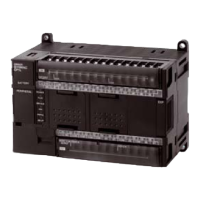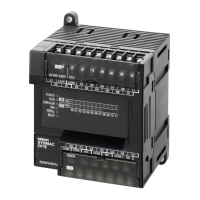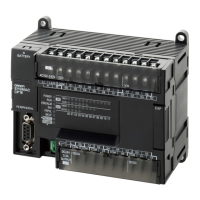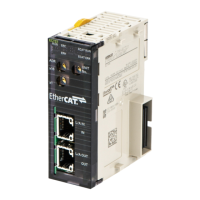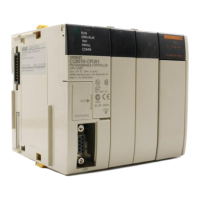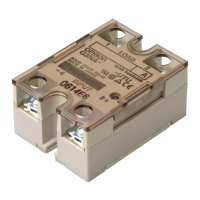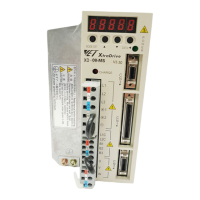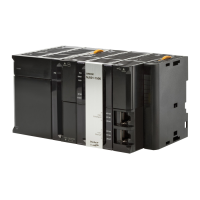340
Serial Communications Section 6-1
6-1-2 No-protocol Communications
No-protocol communications enable sending and receiving data using the
TRANSMIT (TXD(236)) and RECEIVE (RXD(235)) instructions without using
a protocol and without data conversion (e.g., no retry processing, data type
conversion, or process branching based on received data). The communica-
tions mode for the serial port must be set for no-protocol communications in
the PLC Setup.
No-protocol communications are used to send data in one direction to or from
standard devices that have an RS-232C or RS-422A/485 port using TXD(236)
or RXD(235).
For example, simple (non-protocol) communications can be used to input data
from a barcode reader or output data to a printer.
The following table lists the no-protocol communication functions supported
by CP1H PLCs.
CP1H CPU Unit
TXD(236) or RXD(235)
Sending/receiving data
RS-232C or RS422A/485
Standard device with
serial communications
(e.g., barcode reader)
Transfer direction Method Max.
amount
of data
Frame format Other functions
Start code End code
Data transmission
(PLC → External device)
Execution of
TXD(236) in
the program
256 bytes Yes: 00 to FF
No: None
Ye s :
00 to FF or CR+LF
No: None
(The amount of data to
receive is specified
between 1 and 256 bytes
when no end code is speci-
fied.)
• Send delay time
(delay between
TXD(236) execu-
tion and sending
data from specified
port): 0 to 99,990
ms (unit: 10 ms)
• Controlling RS and
ER signals
Data reception
(External device → PLC)
Execution of
RXD(235) in
the program
256 bytes Monitoring CS and
DR signals
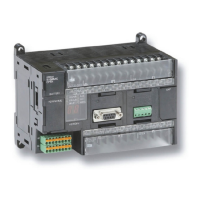
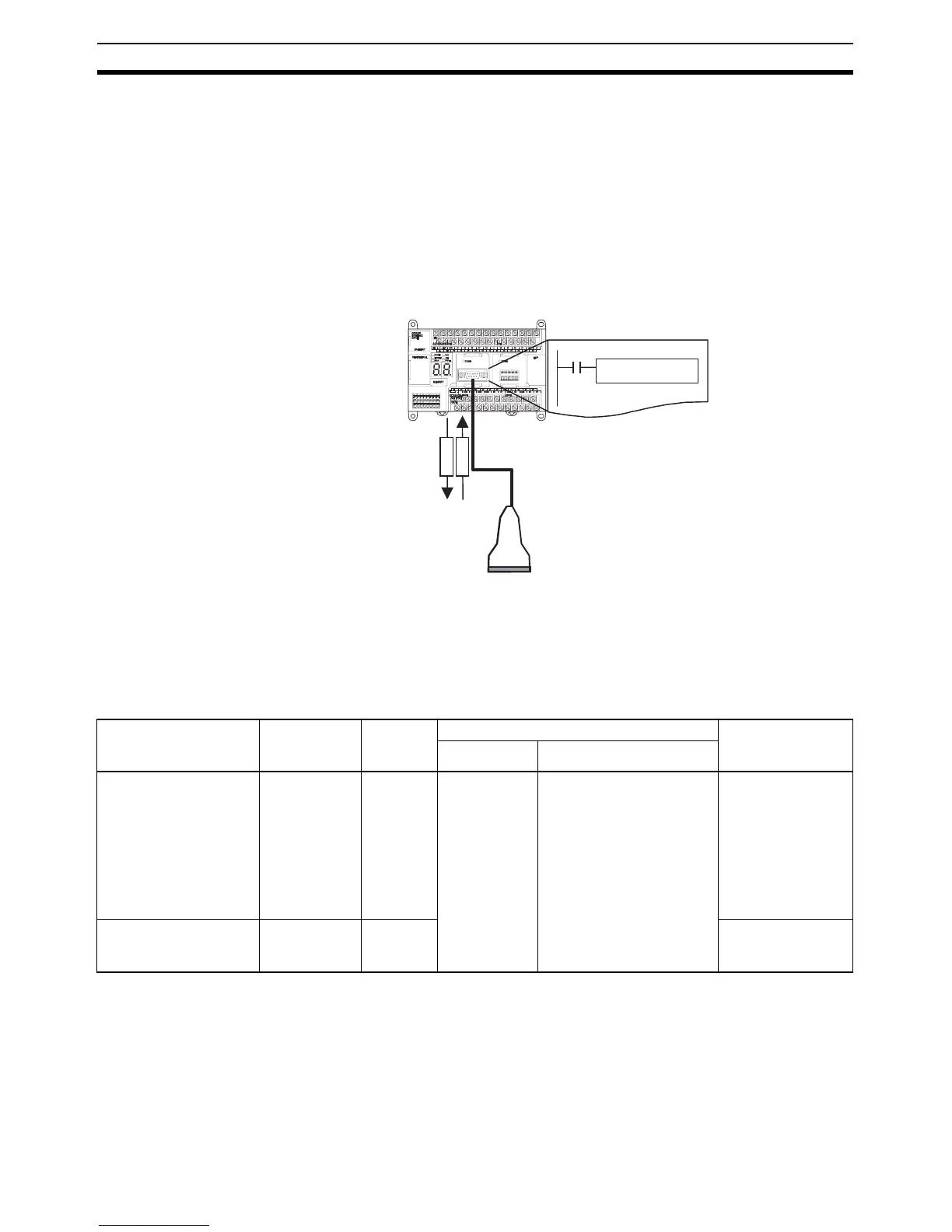